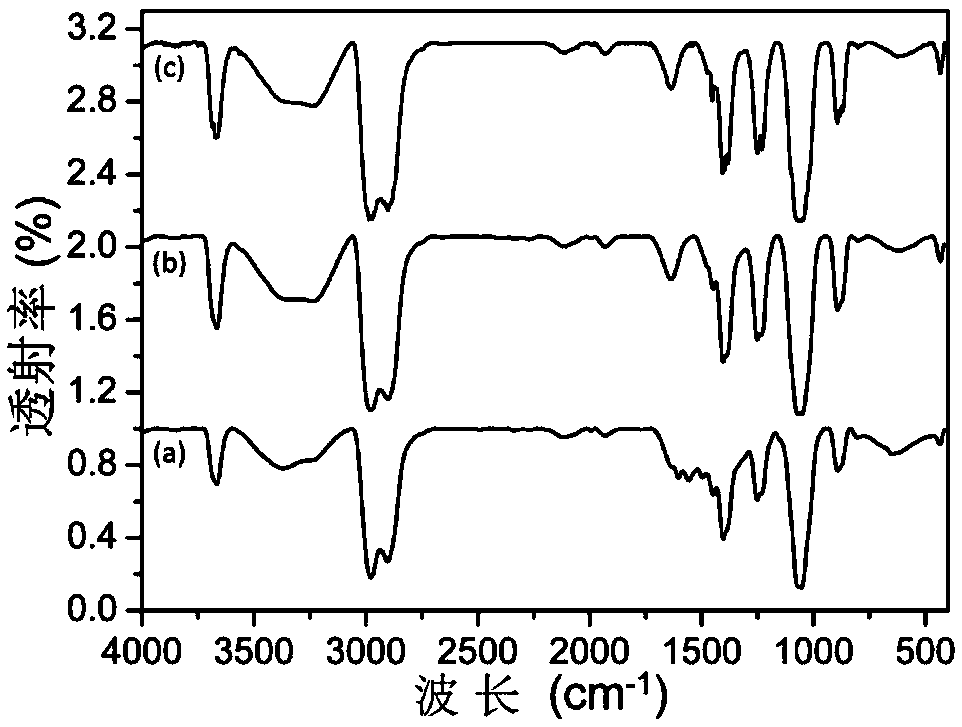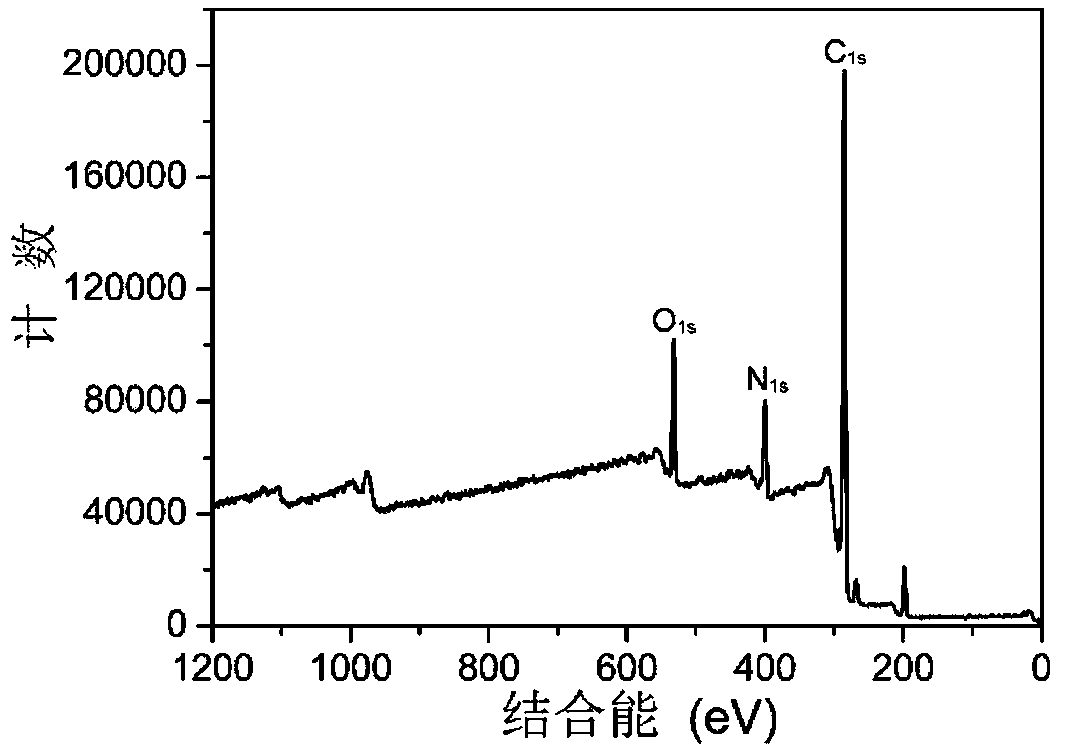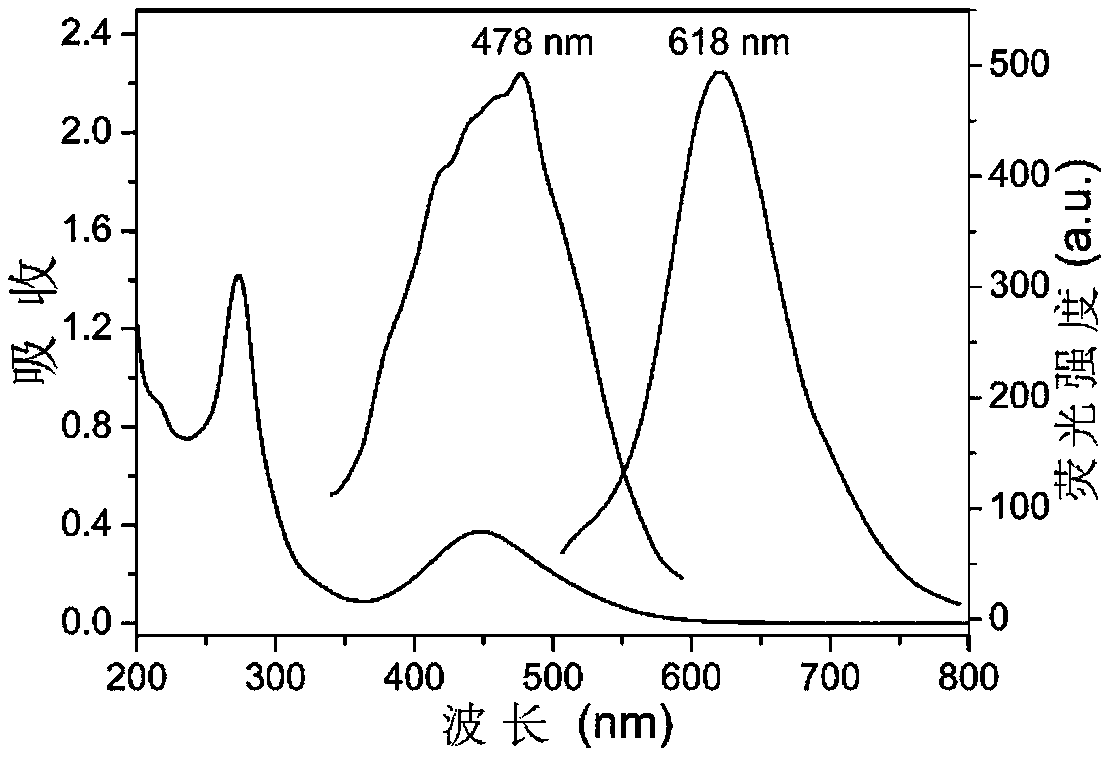Ratio type fluorescent carbon dot for Ag<+> and GSH detection and preparation method thereof
A fluorescent carbon dot, ratio-based technology, applied in chemical instruments and methods, fluorescence/phosphorescence, measuring devices, etc., can solve the problems of limited application, single emission peak, etc., and achieve high sensitivity, good solubility and dispersibility, and selectivity Good results
- Summary
- Abstract
- Description
- Claims
- Application Information
AI Technical Summary
Problems solved by technology
Method used
Image
Examples
Embodiment 1
[0026] One for the detection of Ag + The preparation method of the ratio type fluorescent carbon point of GSH comprises the following steps:
[0027] 1) Weigh 0.003g of neutral red and dissolve it in 20mL of secondary water, then add 400 μL of triethylamine to the solution, and ultrasonically obtain a uniform mixed solution. The mass ratio of neutral red, secondary water and triethylamine is 1.5 :10000:146;
[0028] 2) Transfer the above solution to a 50mL hydrothermal reaction kettle, react at 220°C for 8h, wait for the reaction to stop and let it cool down to room temperature, centrifuge to remove insoluble matter, take the supernatant, and pass it through a 500-1000Da dialysis bag, Dialyze in a glass container for at least three days to obtain a pure aqueous solution of carbon dots;
[0029] 3) The carbon dots emitting orange-red fluorescence were obtained by freeze-drying the above aqueous solution of carbon dots. Taking rhodamine B as a reference, its relative quantum ...
Embodiment 2
[0031] One for the detection of Ag + The preparation method of the ratio type fluorescent carbon point of GSH comprises the following steps:
[0032] 1) Weigh 0.0059g of neutral red and dissolve it in 20mL of secondary water, then add 300 μL of triethylamine to the solution, and ultrasonically obtain a uniformly mixed solution. The mass ratio of neutral red, secondary water and triethylamine is 3 :10000:110;
[0033] 2) Transfer the above solution to a 50mL hydrothermal reaction kettle, react at 200°C for 8h, wait for the reaction to stop and let it cool down to room temperature, centrifuge to remove insoluble matter, take the supernatant, pass through a 500-1000Da dialysis bag, Dialyze in a glass container for at least three days to obtain a pure aqueous solution of carbon dots;
[0034] 3) The carbon dots emitting orange-red fluorescence were obtained by freeze-drying the above aqueous solution of carbon dots. Taking Rhodamine B as a reference, its relative quantum yield ...
Embodiment 3
[0036] One for the detection of Ag + The preparation method of the ratio type fluorescent carbon point of GSH comprises the following steps:
[0037] 1) Weigh 0.009g of neutral red and dissolve it in 20mL of secondary water, then add 200 μL of triethylamine to the solution, and ultrasonically obtain a uniform mixed solution. The mass ratio of neutral red, secondary water and triethylamine is 4.5 :10000:73;
[0038] 2) Transfer the above solution to a 50mL hydrothermal reaction kettle, react at 200°C for 10h, wait for the reaction to stop and let it cool down to room temperature, centrifuge to remove insoluble matter, take the supernatant, and pass it through a dialysis bag of 500-1000Da, Dialyze in a glass container for at least three days to obtain a pure aqueous solution of carbon dots;
[0039] 3) The carbon dots emitting orange-red fluorescence were obtained by freeze-drying the above aqueous solution of carbon dots. Taking Rhodamine B as a reference, its relative quant...
PUM
 Login to View More
Login to View More Abstract
Description
Claims
Application Information
 Login to View More
Login to View More - R&D
- Intellectual Property
- Life Sciences
- Materials
- Tech Scout
- Unparalleled Data Quality
- Higher Quality Content
- 60% Fewer Hallucinations
Browse by: Latest US Patents, China's latest patents, Technical Efficacy Thesaurus, Application Domain, Technology Topic, Popular Technical Reports.
© 2025 PatSnap. All rights reserved.Legal|Privacy policy|Modern Slavery Act Transparency Statement|Sitemap|About US| Contact US: help@patsnap.com



